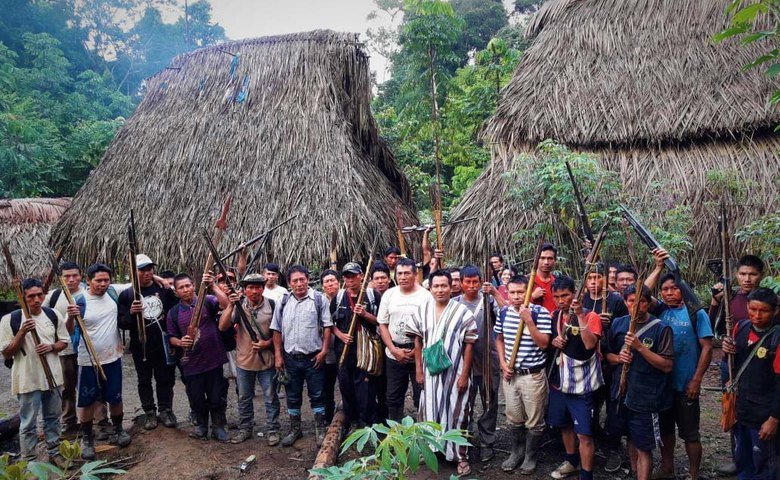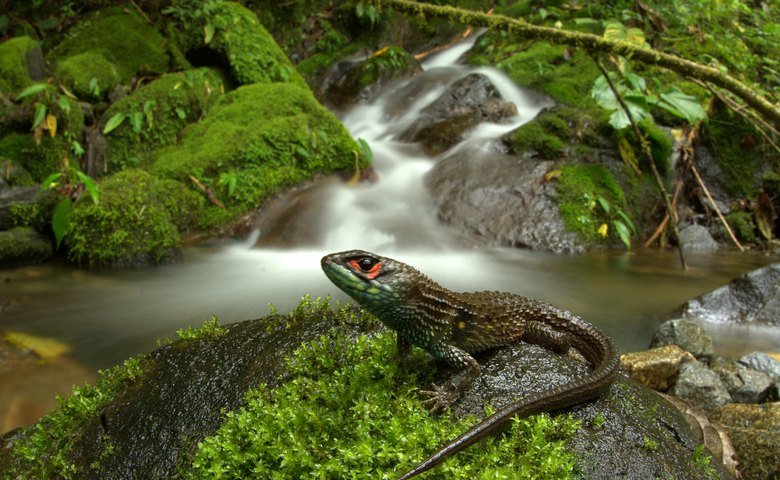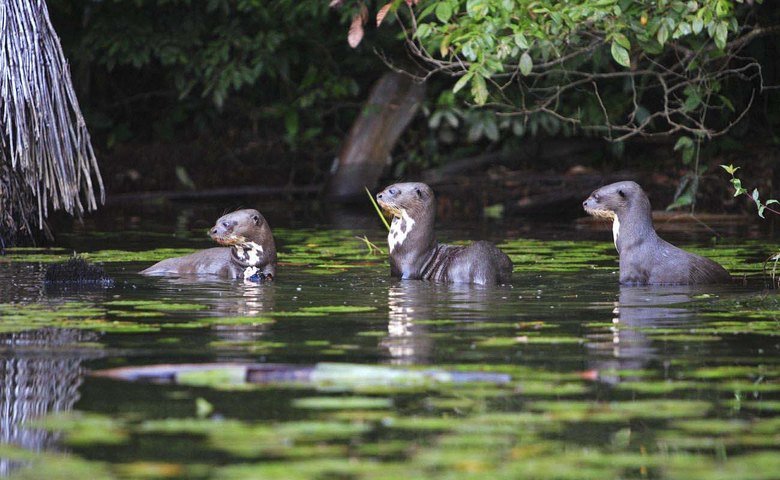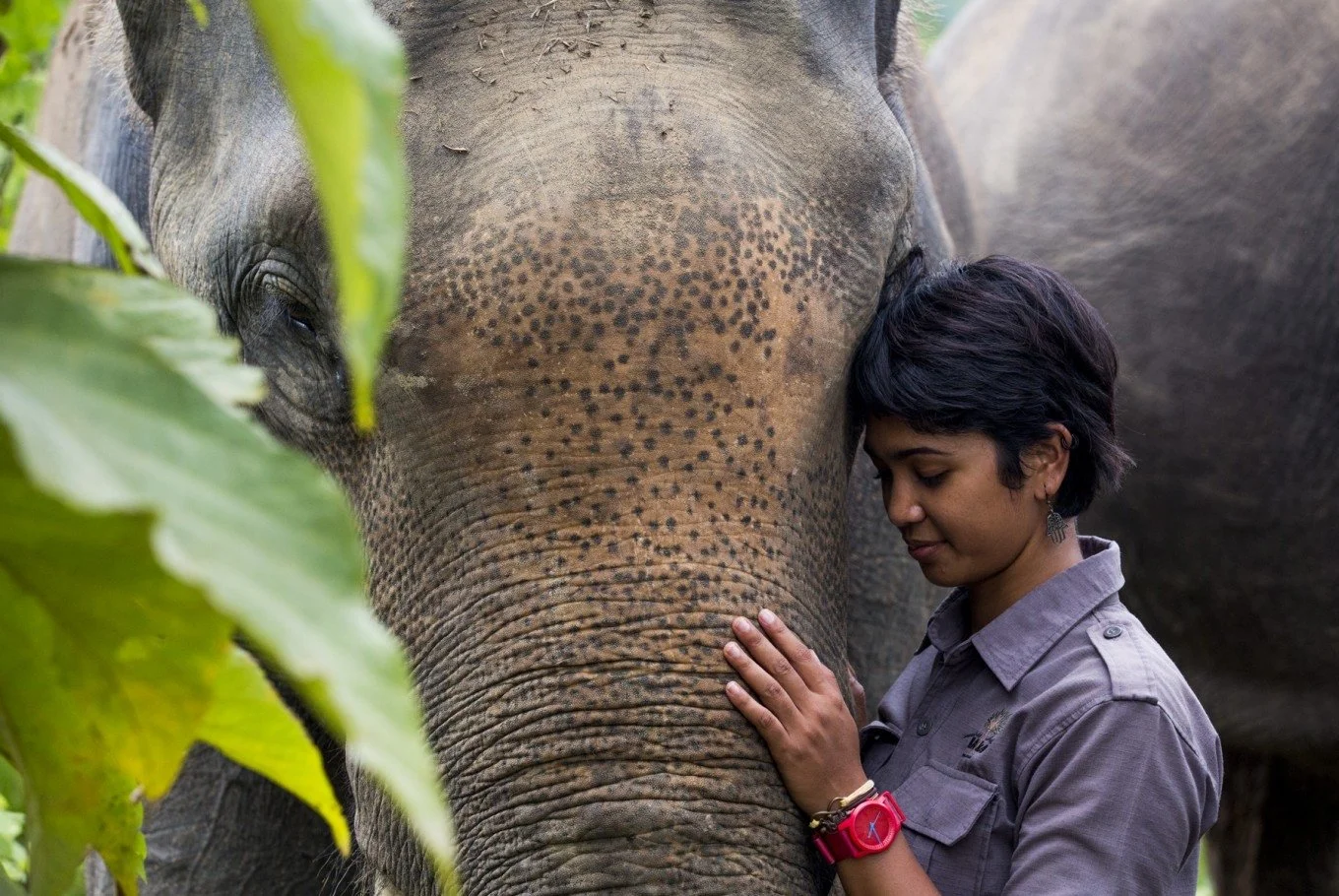New GC Project – Manu National Park And Machiguenga Communities, Peru
Large areas of previously intact tropical forests in Peru are being logged and cultivated by terrorist and cartel-funded groups.
Global Conservation has been invited by SERNANP, the national parks authority of Peru, to deploy Global Park Defense to protect the borders of Manu National Park spanning over 1,700,000 hectares from the Andes to the Amazon.
The protection of Manu National Park is one of the highest priorities of Peru which is facing increasing pressures from a new road linking the park to Puerto Colorado, effectively a ‘Wild West’ of illegal gold mining area, which is further pressured by combined rampant coca cultivation and agricultural expansion by thousands of new settlers.
Patria, a region directly next to Manu, has been known from the time of the Incas to produce the best cocaine in the world.
The new highway from Salvacion to Boca Manu has already been built, and the existing highway to Cuzco has been greatly improved. A planned highway connecting Boca Manu to the to "wild west" mining city of Puerto Colorado threatens to open Manu National Park to massive, rapid development, and potential destruction of forests and wildlife in border areas.
Now is the time to protect Manu National Park by deploying Global Park Defense - systems, equipment, and training - to increase the effectiveness of patrolling and law enforcement, and remove illegal activities from in and around the National Park.
In Manu National Park, we are building new cooperation between the Indigenous Communities surrounding the national parks with the National Parks Authority (SERNANP), law enforcement, and the military when needed to better protect their Indigenous Territories, especially against coca cultivation.
Community Protection is core to Global Park Defense. Global Conservation equips and trains local communities to join in patrolling and enforcement activities, providing operating funding, equipment, and incentives to identify and control illegal activities within their areas of influence.
The Machiguenga are an indigenous people who live in Manu National Park and the adjoining areas. Their main crops grown are manioc, maiz, and bananas, but today commercial crops such as coffee and cacao are increasingly important. Their main source of protein used to be peccaries and monkeys, but today fish have become more important as game animals have become increasingly scarce as a consequence of the encroachment from highland immigrants into the area.
In 2002, following 18 years of constant struggle, part of their ancestral territory was recognized as a natural protected area called the Amarakaeri Communal Reserve. Since 2006, the reserve is co-managed between ten Indigenous communities (organized by the ECA Amarakaeri organization) and the National Service of Protected Areas (SERNANP), with the support of two Indigenous organizations (FENAMAD and COHARYIMA).
The Machiguenga People organized to protect their territories and families from illegal land invasion and coca cultivation. Photo: CEDIA
Supported by satellite and aerial monitoring, deforestation events are rapidly responded to before they become out of control. Invasions can occur swiftly, especially in nearby Indigenous Territories and community areas, where there is no National Park designation to provide protection, no budget for protection, and no formalized law enforcement collaboration.
Despite some co-management between Indigenous communities, many other local communities are not well-organized and have no defense against rapid invasions from outside groups cutting and burning their lands for coca cultivation, agriculture, mining, and illegal logging.
Global Park Defense integrates local communities into park and wildlife protection and increases collaboration with law enforcement to rapidly remove illegal invaders and illicit crops being grown on their lands before things get out of control.
The Yanomami People, for example, were unable to protect their territories against over 20,000 illegal gold miners who destroyed their rivers with dredging that caused mercury poisoning, built illegal roads, and brought disease, prostitution, and corruption into their communities. Within 10 years, hundreds of miles of rivers were polluted, and adjoining forests were destroyed.
By setting up strong and effective defenses through coordinated patrolling involving multiple sectors – Communities, National Parks, Military, and Law Enforcement – we help National Parks protect their forests and wildlife. The primary goal of Community Protection is to work with SERNANP and Global Conservation to deploy Global Park Defense in their territories for forest monitoring and initiate rapid response efforts to deforestation from coca cultivation and illegal logging while in close coordination with law enforcement and the military when needed.
Another vital goal is to increase on-the-ground patrolling in the entire area from Patria / Tono and Boca Manu / Linona in order to increase Community Protection from nearly ground zero to over 10,000 kilometers of patrolling a year in the next two years.
In the past ten years, previously untouched areas have been assaulted by a combination of coca cultivation, agricultural expansion, cattle ranching, and now urban expansion.
Up until the more recent introduction of a genetically altered coca plant that thrives in the Amazon's lowlands, the coca plant used to make cocaine was only grown in isolated locations at high elevations. This has caused a catastrophe clearing hundreds of thousands of hectares of intact tropical Amazon forests. Now, even the farthest reaches of the Amazon in National Parks and Indigenous Reserves are facing land clearing for coca cultivation, and local communities and park rangers are in serious danger.
Deploying Global Park Defense (GPD) in partnership with the Machiguenga Indigenous Communities, SERNANP, and law enforcement will deliver a critical expansion of protection across nearly 200 kilometers and 120,000 hectares.
This integrated model, which Global Conservation Peru created over the course of five years in Sierra del Divisor National Park, is currently being scaled to include the combined 5 million hectares of Otishi and Manu National Parks and their Indigenous Territories.
Never before have Peru's National Parks worked so closely with all key governmental organizations and their combined resources in partnership with local communities to stop the environmental damage of its National Parks. Due to Peru's long history of establishing National Parks and Indigenous Territories, we now need to work harder together in order to protect them.
Integrated Protection for National Parks and Indigenous Territories
Satellite and Aerial Monitoring
Park-wide Communications
Rapid Response Teams
Border Demarcation
Biodiversity Recovery
A new road now traverses the border of Manu National Park bringing thousands of new people into the area
from outside the Indigenous Communities. Photo: MongaBay
Mapping Deforestation for Rapid Response
Using satellites to identify deforestation in the National Park and surrounding Communal Reserves, which are supported by high-resolution aerial overflights to clearly identify specific areas for targeting combined interdictions, enables the Park Authority to prioritize scarce resources by deciding where and when to patrol, when to secure backup from law enforcement, and where to better locate ranger stations to stop deforestation and illegal activities.
By responding rapidly to threats, illegal settlements, and coca growers are discouraged from entering and destroying National Park forests and associated killing of wildlife to feed their crews. By increasing the fear of interdiction and arrest, we greatly discourage illegal activities within the National Park and via critical access routes.
Early Warning System for Land Clearing and Illegal Logging
Due to rapidly changing weather and extensive cloud cover in the Amazon, getting clear photography and sensor information can be quite tricky. In order to have concise information for on-the-ground patrols, we use a combination of four critical layers:
Satellite
Airplane
Drone
Intelligence
Biodiversity Recovery is just as important as Forest Protection as the populations of most species have declined to dangerous levels due to commercial poaching and hunting.
Global Conservation will support the development of a 30-person Manu Community Protection Force deploying Global Park Defense over the next 2 years with the primary goals:
Equip and Training 30 Community Ecoguards from 10 Communities
Hire an Enforcement Manager living in the Region
Logistics for 10,000+ kilometers of Patrolling per year
SMART System Deployment – Protection and Biodiversity
Coordinate Arrests and Relocations with Park Authorities
Satellite and Aerial Forest Monitoring
Coordination with SERNANP and Law Enforcement
Celebrating the 50th Anniversary of Manu National Park
Global Conservation was invited to attend the ceremonies and celebration of Manu National Park’s 50th Anniversary attended by the Minister of Environment and Director General of SERNANP, along with regional and indigenous leaders.
Evolving from a National Forest to a full National Park with UNESCO World Heritage status has required strong support from the Government of Peru with international financial assistance from the Government of Germany through Frankfurt Zoological Society, The Gordon and Betty Moore Foundation, Amazon Andes Fund, and others.
Despite heavy threats and many wanting to log the forests and poach wildlife in the park, the park authority and surrounding communities have protected the National Park in the face of surrounding areas being logged and cleared of wildlife.

















